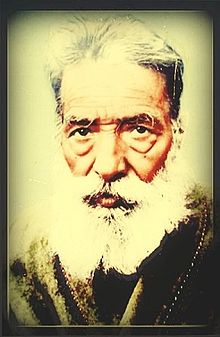Baba Faqir Chand
Baba Faqir Chand, was an Indian master of Surat Shabd Yoga, or consciously controlled near death experience. He was one of the first saints or gurus of Sant Mat tradition to openly speak and write against the deceptive and harmful practices of modern guruism and religious intolerance. As a highly pragmatic individual, Faqir also strove to explain the various practices and principles of Sant Mat based on his own experiences and in the context of modern science and psychology. He was also the first Sant Mat guru to talk about the phenomena consisting of a believer experiencing a subjective projection of a sacred or holy form of a guru or idol without the conscious knowledge of the person at the center of the experience, i.e., the guru. This was termed the Chandian Effect, and described by researcher David C. Lane. Faqir Chand claimed that he had no knowledge of his form manifesting before a person and helping them with their worldly or spiritual problems. He fervently expressed that in
Baba Faqir Chand was born onNovember 1886 in village of Panjhal, located in the Hoshiarpur district of Punjab, India. He was brought up in a poor Brahmin family, having a suppressed childhood. As a result, he sought relief in worship of God . At young age, against his family traditions, he became nonvegetarian for some time. Later, his repentance and prayers took him to Radha Soami Mat through a divine vision of Data Dayal Shiv Brat Lal Ji Maharaj. He initiated Faqir Chand into Radha Soami Mat and gave him a book, Saar Vachan, written by Shiv Dayal Singh the founder of Radha Soami Mat. He soon found that the books positions on various religious movements were contrary to his own impressions and beliefs. However, because of his unshakable faith in Data Dayal Ji he took a vow and honestly followed the path shown by his guru. Faqir Chand started delivering discourses to his followers only after Shiv Brat Lal died. Among these discources was his experienced belief that the images and
Source: Wikipedia

